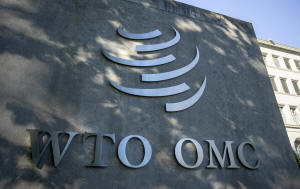|
The
Geneva-based body said it had observed a sharp rise in
unilateral trade restrictions and a growing view that
cooperation with a more limited group of friendly counties and
"de-risking" was the right course.
Since Russia's invasion of Ukraine, trade between two blocs of
countries with different United Nations voting patterns has
grown by between 4% and 6% slower than trade within these blocs.
In the latest UN vote related to Ukraine, calling on Russia to
withdraw its troops, 141 members voted in favor. Seven voted
against and 32 abstained, including China, India and South
Africa.
The WTO report said the divergence, which excludes figures for
Russia and Ukraine, had been similar for foreign direct
investment.
Trade flows between China and the United States had realigned,
with increases for products not subject to tariffs and sharp
reductions for some categories such as pharmaceutical products
and semiconductors.
"The China-USA story is a very important one there in the data,
but it's not limited to that," WTO Chief Economist Ralph Ossa
told Reuters in an interview.
Trade concerns raised at WTO committees, seen as early warning
indicators, have spiked as unilateral trade restrictions have
grown.
However, overall trade had continued to grow, even between the
United States and China where trade reached a record high in
2022, and the WTO said the worst predictions of supply shortages
and sharply higher food prices had not materialised.
The report points to the rapid expansion of trade in digital
services and environmental goods, but said a further increase in
unilateral measures could yet fragment the world economy.
It argues a renewed drive towards integration -
"re-globalization" - is the way to tackle current problems of
security, poverty and climate change.
(Reporting by Philip Blenkinsop; Editing by David Holmes)
[© 2023 Thomson Reuters. All rights
reserved.]
This material may not be published,
broadcast, rewritten or redistributed.
Thompson Reuters is solely responsible for this content.

|
|




